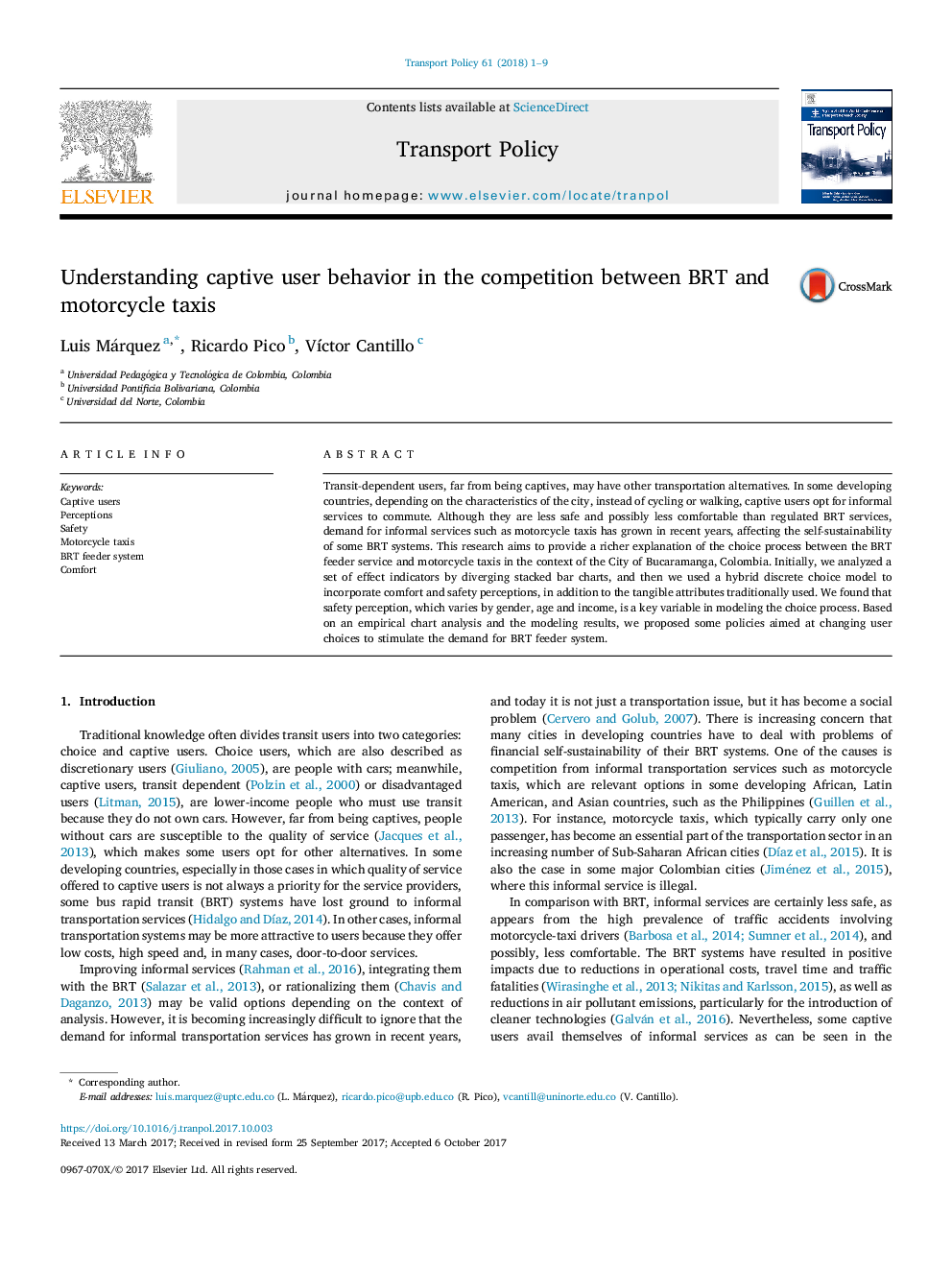| Article ID | Journal | Published Year | Pages | File Type |
|---|---|---|---|---|
| 7497254 | Transport Policy | 2018 | 9 Pages |
Abstract
Transit-dependent users, far from being captives, may have other transportation alternatives. In some developing countries, depending on the characteristics of the city, instead of cycling or walking, captive users opt for informal services to commute. Although they are less safe and possibly less comfortable than regulated BRT services, demand for informal services such as motorcycle taxis has grown in recent years, affecting the self-sustainability of some BRT systems. This research aims to provide a richer explanation of the choice process between the BRT feeder service and motorcycle taxis in the context of the City of Bucaramanga, Colombia. Initially, we analyzed a set of effect indicators by diverging stacked bar charts, and then we used a hybrid discrete choice model to incorporate comfort and safety perceptions, in addition to the tangible attributes traditionally used. We found that safety perception, which varies by gender, age and income, is a key variable in modeling the choice process. Based on an empirical chart analysis and the modeling results, we proposed some policies aimed at changing user choices to stimulate the demand for BRT feeder system.
Keywords
Related Topics
Social Sciences and Humanities
Social Sciences
Geography, Planning and Development
Authors
Luis Márquez, Ricardo Pico, VÃctor Cantillo,
